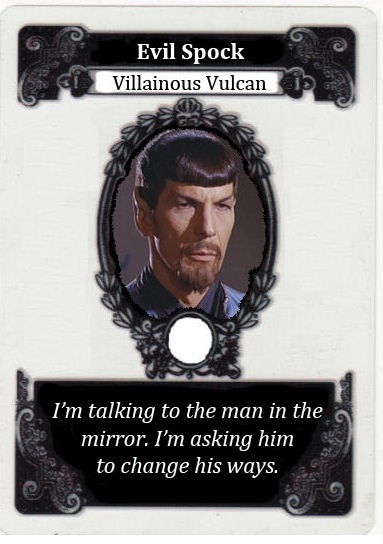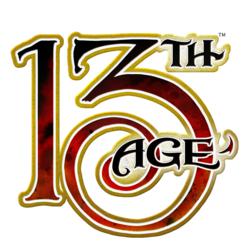I’m currently developing a new fantasy setting. I’ll be talking about this more in the months ahead, but one of the key elements is that I’m designing it to be system neutral. I will be launching with RPG support for at least one system, but unlike Eberron the world itself isn’t integrally tied to the mechanics of a particular RPG – and I want to make it as easy as possible for people to adapt the setting to the system of their choice. As this is a topic I’m wrestling with on a daily basis, it’s a great time to address questions about adapting Eberron to other systems.
If you are adapting Eberron to other systems, what is important to have mechanically? (besides dragonmarks and races)
It’s a difficult topic to address without knowing anything about the system in question. You could use Eberron with 13th Age, Dungeon World, or Dread – but obviously in a rules-light system like Dread, you’re going to approach the conversion in a very different way. I’m going to use Dread as an example throughout this article simply because it is so different from any edition of D&D. For those who aren’t familiar with it, in Dread characters are defined by a basic concept and the answers to a list of questions the gamemaster asks the players; they have no numerical statistics. All challenges are resolved through Jenga; when a person tries to do something that involves risk, the gamemaster decides how many tiles they must move in order to succeed.
So, I think your basic guide is the Ten Things You Need To Know About Eberron, found on page 4 of the 4E Eberron Campaign Guide and page 8 of the 3.5 Eberron Campaign Setting. I’m not going to go through all ten points, nor am I going to reprint the full text of a point, so you’ll want to refer to one of the books for full benefit.
- Tone and attitude. Eberron “combines traditional medieval D&D fantasy with swashbuckling action and dark adventure.” This section mentions that we added action points to support this flavor – that they allow “players to alter the course of dramatic situations and have their characters accomplish the seemingly impossible.” Some systems out there already have something similar built in. If not, one option is to simply lift the 3.5 or 4E action point systems and use them as is – spend an action point to take an extra action, add an extra die, or do something remarkable. For Eberron Dread, I would give each player a token and allow them to use that token once to knock five pulls off of a particular action… which means most things are automatic, but as GM I do still have the ability to say “That’s a 20-pull action, but hey, it’s only 15 with your action point.”
- A world of magic. Read what it says in the book. The key here is that magic is a part of everyday life. Magewrights are specialists who can cast a handful of spells or rituals, and who have turned that mastery into a job – the locksmith who can perform arcane lock and knock, the oracle who can cast augury and divination. A critical point here is that fully-powered wizards, artificers, and clerics are rare and remarkable; Eberron is a world of widespread low-level magic, and a magewright locksmith can’t simply pick up your spellbook and learn to cast fireball. For the most part this is about the world around the players and the services that are available to them. If the players are in Sharn they should be able to find an arcane locksmith, whether it’s D&D or Eberron Dread.
- Dragonmark Dynasties. I know you said “besides dragonmarks”, but my point is that there’s more to dragonmarks than the simple mechanics of the mark itself. The dragonmarked houses are influential forces in society because of the magical services they offer. Even if no player character has a dragonmark, they’ll go to House Jorasco for healing, rely on Orien and Lyrandar for transportation, send a message through House Sivis, and take advantage of House Cannith’s services any time they purchase magical goods. House Tharashk’s powers are reflected in their presence in remote places – the fact that their gift allows them to locate veins of precious resources that would otherwise go undiscovered. To cut to the chase: when translating the world to a new system, don’t simply think about the dragonmarks as they will be used by the players; think about how you will represent the primary services and gifts of each house, and how PCs will feel the influence of those houses.
With both this and the previous point, I want to emphasize that if the RPG you’re using has its own magic system, feel free to dramatically change the services available or power of the mark. Don’t worry about directly mimicking the powers of the 3.5 Mark of Creation; consider how creation works within this system, and what magics exist that facilitate it. Then place those powers in the hands of House Cannith. Jorasco heals. Cannith creates. Sivis communicates. The precise powers they wield don’t have to be identical from system to system, as long as they are the masters of those fields.
- The Last War has ended… sort of. The impact of the war is one of the most fundamental themes of Eberron. Mechanics aside, you should always consider the impact the war has had on your characters and plot. Mechanically, are their any aspects of the system that lend themselves to magical weapons of mass destruction or other things that would have been harnessed to the war effort?
There are many other points you could consider; for example, I will look at the influence of the planes, and the effect of manifest zones, coterminous and remote periods, and the like. However, this isn’t as important as those basic ten points; review that list, and if you feel like you’ve got them covered, you’re on solid ground.
Of course, one of those ten points is “new races.” So…
If creating homebrew Warforged, Kalashtar, Shifters, or Changelings in other systems, what about each race should I focus on?
It’s a difficult question to answer without addressing a particular system, but here’s my take on the core of each race.
- Warforged. The warforged are constructs. They don’t eat, breathe, or sleep. A warforged soldier is a weapon; his armor is fused to his body. It’s up to you how far to take the construct element. 3.5 provided the warforged with a host of immunities, while 4E scaled them back. Regardless, durability is a core theme: the warforged are bad from leather and steel, and have fewer vital points than a human. A second thing to consider is that the warforged are magical beings; they are living constructs and can evolve beyond their original design. A warforged juggernaut literally grows heavier armor and spikes. While it may not come up in a game, another key fact is that the warforged cannot reproduce; there’s a finite number of them, and if they want to thrive as a race, this is something that will need to be addressed.
- Kalashtar. A kalashtar shares its mind with an alien spirit. This allows it to resist psychic attacks and enhances its personal psychic abilities. If you’re not using a system that supports psionics, you can mimic this with other forms of magic, or simply emulate it by granting the kalashtar the ability to form simple mindlinks, bonuses to checks to influence people, and the like. At lest it go without saying, kalashtar don’t dream normally.
- Shifters. I wouldn’t worry about the precise shifter abilities presented in either book as much as I’d try to capture the basic idea of the shifter: a being with a strong primal spirit, who can call its animalistic nature to the fore for a brief period of time. The primal characters fit shifter nature quite well; the druid’s ability to shapeshift is an extension of its inherent nature, while the barbarian calls on feral instinct to fuel his rage. When looking to civilized shifters, it’s a question of how they harness that animalistic spirit for their urban endeavors, and whether they feel trapped in the city or have adapted to it like a rat. But in short, animalistic characteristics that can be enhanced for a brief period of time.
- Changelings. Obviously the first challenge is the shapeshifting ability, and making it work without unbalancing your game. Note that by default it doesn’t change clothes. Beyond this, changelings are related to doppelgangers (or are one and the same, if you’re using 4E) and as such has a latent gift for telepathy; in 3.5 this is reflected by their bonuses to Bluff and Insight, as they are capable of subconsciously picking up surface thoughts and using them to influence people.
All of this really just scratches the surface; the warforged Dragonshards, Kalashtar DDI article, and other resources delve more into what defines each race. But these are some key things I’d take into account when converting the race.
Are you using Eberron with a system other than Dungeons & Dragons? Tell me what you’re using and what you’ve done with it!



